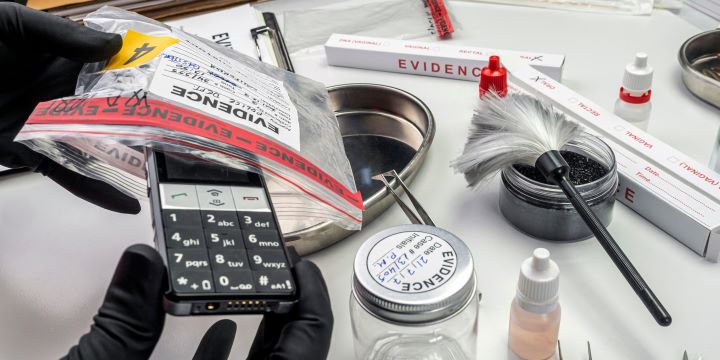Key Takeaways:
- Digital forensics is pivotal in legal investigations in our increasingly digitized world.
- Effective forensic collection strategies emphasize maintaining data integrity and adhering to the chain of custody.
- The digital forensics landscape continually evolves, with new tools and methodologies emerging to meet modern challenges.
- Professional expertise and continual learning are crucial for keeping pace with the advancements in digital forensic practices.
- Ensuring ethical conduct in digital investigations protects individual rights and upholds the integrity of the legal process.
Table of Contents:
- The Foundation of Digital Forensics
- Critical Components of an Effective Forensic Collection Strategy
- Challenges in Digital Forensics
- The Legal Implications of Digital Evidence
- Advances in Forensic Collection Tools and Software
- The Role of Professional Expertise in Digital Forensics
- Best Practices for Handling and Analyzing Digital Evidence
- Ethical Considerations in Digital Forensic Investigations
- Case Studies: Digital Forensics in Action
- Preparing for the Future of Digital Forensics
The Foundation of Digital Forensics
In an age where digital interconnectivity is a fixture of modern life, digital forensics has become a cornerstone of investigative and legal procedures. Forensic collection, a critical component of this field, entails the systematic and meticulous process of identifying, securing, and examining digital evidence. Its role in contemporary investigation can’t be overstated, with digital footprints often serving as the primary leads in various cases, ranging from corporate espionage to intellectual property theft.
Initially, the domain of cyber sleuths was limited to seemingly innocuous tasks such as recovering deleted emails or files. However, the rapid technological sprawl has redefined the scope, making digital trails as significant as physical evidence. Modern-day investigations often focus on discovering crucial data gleaned from a suspect’s smartphone, cloud storage, or online social platforms. Evidence such as timestamps, login attempts, and geolocation data has been elevated to a standard that is relied upon and expected within the courtroom setting.
The core objective of forensic collection—ensuring the legitimacy and admissibility of digital data in legal scenarios—demands a blend of technical understanding and legal knowledge. As the digital environment evolves and expands, so do the challenges and complexities that investigators and practitioners face in accurately and ethically harvesting digital evidence. Ensuring that this data is reflective of reality, untainted by manipulation or error, is a pursuit that shapes the foundation of digital investigations today.
Critical Components of an Effective Forensic Collection Strategy
The complexity of safeguarding digital evidence necessitates a strategy emphasizing two crucial elements: data integrity and chain of custody. In digital forensics, maintaining data integrity goes beyond preventing alterations; it encompasses ensuring that the evidence presented accurately reflects the original state without any flaws. Achieving this integrity involves employing specialized software to generate precise, bit-by-bit duplicates or “images” of digital storage media. This procedure is indispensable for ensuring admissibility in legal proceedings, particularly in the context of forensic collection.
Equally paramount is the adherence to the chain of custody. This procedural document chronicles each interaction with the evidence, providing a transparent and chronological account of its journey from the crime scene to the courtroom. Transparent documentation of the custody chain and thorough procedural logging prevent any potential claims of evidence tampering or mishandling, which could otherwise derail a legal case. Moreover, the critical nature of the chain of custody protocol has prompted the development of digital solutions designed to automate and secure each step of the evidence-handling process.
Challenges in Digital Forensics
Digital forensics practitioners must navigate a labyrinth of challenges in pursuing electronic truth. The staggering amount of data modern devices produce necessitates a herculean effort to track, secure, and analyze potential digital evidence. This task is exacerbated by the constant technological innovation introducing new data storage forms, each with its own recovery and interpretation complexities. As cybercriminals employ increasingly sophisticated methods to evade detection, digital forensic experts must evolve their toolkit and approach to capture this elusive data.
One critical challenge is balancing forensic thoroughness and individual privacy properly. Investigative techniques, while rigorous, must never infringe upon the legitimate privacy concerns of individuals. New methods and technologies that ensure in-depth analysis while maintaining the privacy framework are under constant development, and this balance is fast becoming a cornerstone ethical consideration within the discipline.
The Legal Implications of Digital Evidence
Integrating digital evidence into the legal arena is an emerging trend but an established norm. Judges, lawyers, and jurors increasingly rely on the digital artifacts presented to them, which may include communication records, transaction logs, and even metadata. The evidentiary rules governing digital data’s admissibility are stringent, refining processes by which data is analyzed and presented to ensure it holds up to legal scrutiny. Credible forensic practices must not only reveal the information but must do so in a way that withstands challenges to its authenticity and relevance.
Legal professionals convey technical evidence to a lay audience in the judicial context, translating bytes and forensic findings into an accessible narrative. This crucial aspect of digital forensics requires a synergy of technical expertise and legal savvy. This convergence becomes significantly pronounced when appraising such advancements through the lens of a digital forensics scholarly article.
Advances in Forensic Collection Tools and Software
As a reflection of the digital age’s dynamism, forensic collection has seen a surge in advanced tools designed to meet the contemporary demands of evidence collection. These tools range from volatile memory collection utilities that capture transient data to sophisticated software that automatically reconstructs activities and timelines from fragmented digital remnants. These systems represent a quantum leap in the forensic capability landscape by providing comprehensive capabilities like advanced data carving, cross-media correlation, and automated log analysis.
The digital forensic community measures the effectiveness of these tools in their ability to handle vast and sophisticated datasets, tackling challenges such as data encryption, file obfuscation, and embedded data within everyday devices. The forensic ecosystem is enriched with applications that support ongoing trends in technology, such as cloud-based analytics and IoT device assessments, demonstrating the field’s determined stride toward unrivaled depth and breadth of analytical proficiency.
The Role of Professional Expertise in Digital Forensics
Despite the plethora of advanced forensic tools, the discernment wielded by a trained forensic investigator is irreplaceable. Expertise realized through exhaustive training and years of field experience differentiates meaningful findings from digital white noise. Credentials and certifications are benchmarks for industry proficiency, standardizing the high level of expertise expected among practitioners. Their testimonies, built upon such expertise, carry significant weight in legal proceedings and are often the fulcrum upon which cases tilt.
But, with the landscape of digital forensics constantly in flux, resting on laurels is not an available luxury. The commitment to continuous improvement necessitates ongoing professional development. As new forms of digital evidence emerge and as cybercriminal strategies evolve, so must the knowledge and skills of those within the forensic field grow to confront these challenges adeptly.
Best Practices for Handling and Analyzing Digital Evidence
Engaging with digital evidence demands an unwavering commitment to best practices. These practices anchor the entire forensic process. Rigorous and standardized collection procedures safeguard the integrity of the evidence, ensuring that each byte carries its total weight in legal deliberations. Utilizing tools and systems that have withstood rigorous validation tests ensures that digital evidence stands resilient against rigorous legal challenges. Meanwhile, comprehensive documentation of methodologies and findings underpins the scientific approach to digital forensic examination.
Critical analysis of complex digital structures requires a refined methodology—a combination of technical capability and insight into the digital environment. Forensic analysts are not mere data gatherers; they are digital detectives. Their analysis can identify patterns indicative of wrongdoing, unravel cryptographic protections to reveal hidden truths and interpret data structures in a manner that elucidates otherwise inscrutable cybercrimes.
Ethical Considerations in Digital Forensic Investigations
Digital forensics is as much a discipline of technology as it is of ethics. Investigators must uphold a code of ethical conduct that affirms objectivity and respects individuals’ privacy and civil liberties. Intersecting with the legal framework, these ethical standards are critical to maintaining confidence in the legal process. In this context, ethical challenges, whether related to undue invasion of privacy or the potential for evidentiary distortion, are confronted with persistent adherence to ethical norms.
Additionally, due to the very nature of their work, forensic experts possess the potential to impact the lives and rights of individuals significantly; this power is a trust that must be wielded judiciously. Operating within this paradigm, the forensic collective strives for legal compliance and moral integrity, recognizing that each investigation has profound implications extending well beyond the digital confines.
Case Studies: Digital Forensics in Action
Illustrative case studies spotlight digital forensics’ remarkable impact on solving real-world issues. Each scenario encapsulates unique challenges, whether tracing the origins of a cyber-attack, uncovering subversive insider threats, or dissecting the digital elements of white-collar crimes. These practice-driven studies demonstrate the potential of digital forensics to piece together digital puzzles and serve as platforms for learning, providing insights for refining techniques and strategies.
Notably, the integrity of forensic processes comes into sharp focus in situations involving sophisticated crimes that harness the cover of the digital veil. For forensic professionals, these scenarios are opportunities to validate the efficacy of forensic tools and showcase the indispensable role digital evidence plays in pursuing justice. Each case thus becomes a chapter in the broader narrative of digital forensics, contributing to its ongoing evolution. High-profile incidents, in particular, push the envelope of what is technologically and legally possible, with implications for present and future practices, as a report on digital forensics tools suggests.
Preparing for the Future of Digital Forensics
The relentless advance of technology lays out an electrifying and challenging path before the world of digital forensics. To remain effective, professionals must embrace change, integrating groundbreaking tools and methodologies that will undoubtedly emerge. The onus is on the industry to anticipate new kinds of cybercrimes and to invigorate forensic collection practices that are up to the task of confronting them.
Cross-disciplinary collaboration is vital in enriching the digital forensics domain. Insights gleaned from complementary fields such as cybersecurity, data science, and the social sciences have the potential to infuse forensic practices with layered perspectives, fostering growth and innovation. Since the future of digital forensics is destined to be shaped by interdisciplinary contributions, practitioners are encouraged to broaden their horizons, thereby solidifying their readiness to tackle the nuanced digital challenges that the future holds. Integrated research, practical development, and robust discussion within the forensic community are pillars upon which the field will continue to stand, adapt, and thrive.
Ultimately, the future of digital forensics rests not just on technology or techniques but on the unwavering commitment of professionals to uphold truth, justice, and ethical standards. As we face a digital tomorrow rife with opportunities and unknowns, this commitment will guide forensic endeavors successfully forward.




